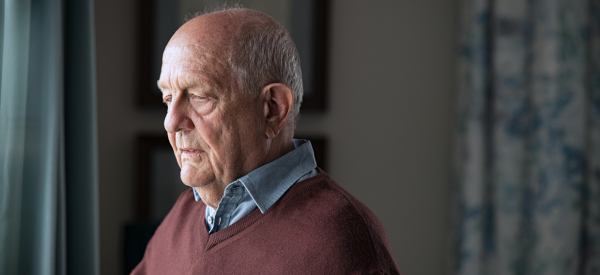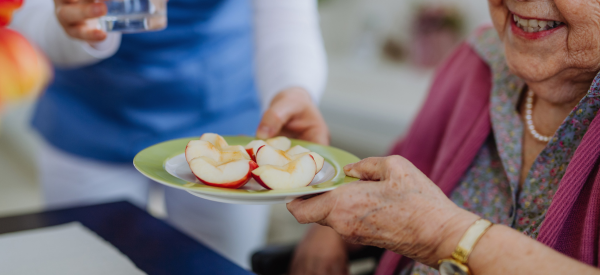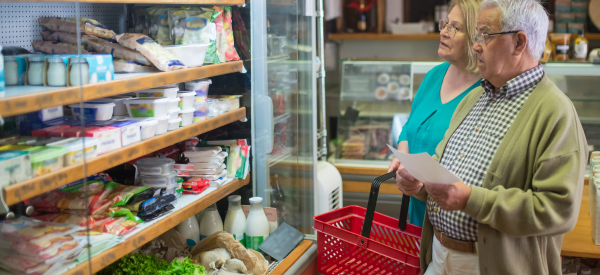
We sat down with Susan to learn more about her work, and how it can benefit seniors and help alleviate pain.
Can you talk about your professional background, and what led you to become a yoga instructor?
I have been active my entire life, and have always been fascinated with how the body works. I have never been good at sitting still. When I was a kid my dad used to tell me to “stop my motor” because I was always shaking my leg and it bothered him. I was into tennis and then running, as well as ballet and acrobatics. After the birth of my first son, I started weight lifting and did so very religiously for several years. Then Pilates came along, and I was curious to try that. I stopped weight lifting and starting learning both Pilates on the mat and with equipment, and eventually began teaching Pilates on the mat. One day my Pilates teacher asked if I would like to accompany her to her private yoga lesson. Of course I said yes. Since that day, I have been practicing yoga.
My grandfather, who was in his nineties, lived at an assisted living home where they offered chair yoga. I made a point of visiting him on Tuesdays so I could attend class with him. I loved the teacher and her enthusiasm, and how the students responded in such a lively way.
Years later, my father moved to an assistant living home and I volunteered in the exercise room there; helping seniors on and off equipment, and teaching a little chair yoga at the same time. A very loyal community developed, and I learned from the wisdom of my elders—about the body and the mind.
Over time I studied with many master teachers, experienced various types of yoga movements, and became certified to teach Yoga. I learned how to use my breath in a manner which allows my body and mind to relax. I have developed the ability to be still.
I am passionate about sharing my knowledge with the senior community through the teaching of chair yoga, because it brings me joy to make a difference in their day. Small and gentle movements help alleviate discomfort, while breathing and relaxation bring energy and peace. The community that develops nourishes our souls.
What do you like most about your role as a yoga instructor and relaxation coach?
I feel fortunate that I get to earn a living doing something I am passionate about. I enjoy experiencing the pleasure my students get when they feel stronger, more stable, more confident, and more alive! Students tell me that they have felt parts in their bodies during class that they never knew they had.
I love sharing what has been so important and helpful in my life with my students, so that they can reap the benefits. Not to mention that every time I take the role of the teacher, I get to be the student as well.
What common challenges do you see seniors facing, and how can yoga and relaxation instruction help to resolve them?
Posture is a major component of proper breathing. Good posture is a constant challenge as we age because the body likes the path of least resistance. Maintaining good posture is also difficult in a society where we sit so much. When breath is compromised, we experience a lack of energy. As the body moves less, bone and muscle loss occur, weakening strength and stability. As the immune system weakens, inflammation occurs and injury and illness become more prevalent. Sleep is disturbed, impacting attention and focus, and the memory also starts to get foggy.
With less energy and mobility, loss of interest and depression develop, all of which can be arrested, prevented, and sometimes reversed, with proper movement and breath. Seniors also have a lot of emotional challenges. There is stress and anxiety surrounding the loss of friends and relatives, as well as dealing with their own mortality. In addition, adjusting from being independent to dependent can be frustrating. Yoga teaches coping mechanisms that are always accessible to help soothe oneself.
How can seniors benefit from the practice of yoga and breathing relaxation on a regular basis?
Yoga philosophy is based on preventing loss of ease and peace. Dis-ease is simply the loss of natural ease. The practice aims at getting us back to a state of natural living.
Breathing and yoga exercises transform the body from matter into energy. The poses (asanas) combined with the breath (pranayama) energize the body and mind. By placing the body in different positions that give mild pressure to various body parts, there is a gentle massage that squeezes out toxins and brings fresh blood circulation to those areas. During the process of this transformation, many changes are occurring in all of the systems of the body; blood pressure and heart rate decrease. Inflammation is reduced. Injury is prevented and the immune system is strengthened. Physical and mental stress is reduced, and the mind can become relaxed and clear. The body regains strength and flexibility, balance and alignment. Respiration improves, deeper sleep develops, and a new order and vitality nourishes the body.
Students get educated on how to use their breath more efficiently. It is said that we only use 1/7th of our lungs’ ability in normal breathing. But with practice we can learn to maximize our lung capacity.
Memory is connected with attention. An attentive mind can remember. A distracted mind will forget. Attention is energy which produces more energy when we use it. It is similar to a car battery which recharges while the car is running. Seniors often seem to forget, but it is only that they have lost interest in what they are doing. Yoga teaches attention to detail which increases body awareness, and how to improve posture.
Our brain is a delicate organ and we must continue to use and entertain it, but also give it time to relax. We struggle to remember when we fear we are becoming forgetful. It is fear that paralyzes the brain. When we give it time to relax and renew, the fear is eliminated.
The body has its own memory and after practicing the yoga poses and even during the night, it continues to work on its joyful expansion.
Can you walk us through a typical class or session?
I arrive on Monday morning at 9:55 am. I enter the room which is filled with students bubbling over their weekend, anxiously awaiting Yoga class to begin. Usually Maureen, a very small woman, shouts “quiet” and the room stills.
We close our eyes and take our focus inside…scanning our bodies to see what they need for the day. We practice stillness and peace.
After allowing our eyes to readjust to the light, the breath work initiates. Practicing deep diaphragmatic breathing trains the nervous system to relax and the lungs to fill to capacity.
We bring movement to all of our joints, usually starting with the shoulders and moving on down the body to our ankles. It is said that yoga is to the joints, what oil is to the Tin Man.
Students are very focused on what I am demonstrating so they can replicate it and do a “good” job. But really what is happening is that they are becoming a community of like-minded people who are gaining strength and confidence with each passing week. They are feeling sensations in their bodies that they have not felt for a long, long time, and it is making them feel ALIVE and rejuvenated!
When we are done moving, we close our eyes and become still again so the body can remember and store all of the work we have done, making the next time just a little less effort.
Can you discuss your proudest moments in your career, or some of your biggest achievements?
I get such joy out of watching the training wheels come off. It is difficult to articulate on paper because one has to experience the “feeling” of being there. Some students come in with an open mind because they are there and they want to try it. But they are seniors and they have been moving and thinking and living their lives the same way for many years, and so they are apprehensive about the unknown.
I am always proud of how much effort my students put into their practice. Often people share their stories with me. Maybe they have very limited mobility in their shoulder joint and they tell me they can’t raise their arms over their head because it hurts, and a few weeks later, the arm is moving more, they feel much better and I am happy that I helped them alleviate their pain.
But my proudest moment as a teacher thus far is a story about Maureen.
Maureen uses a walker and when she first began taking class she was not able to get up from the chair on her own. We do half the class sitting and the other half standing with support of the chair. When it was time to stand I would help Maureen up. Then one day she stopped me and said she would do it on her own. Lo and behold– she did. We all clapped and it was a magical moment for me, and I’m pretty sure the whole class community was bathing in her glory!
Interview with Susan Smolin: Certified Yoga Instructor on Breathing, Relaxation & Yoga for Seniors



